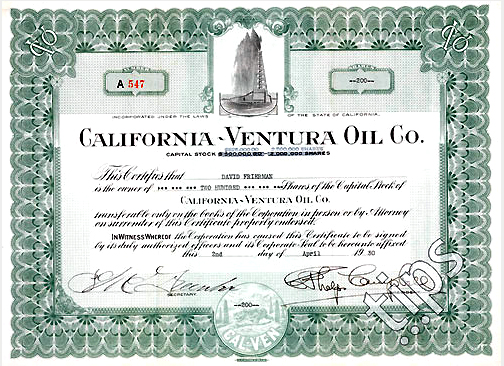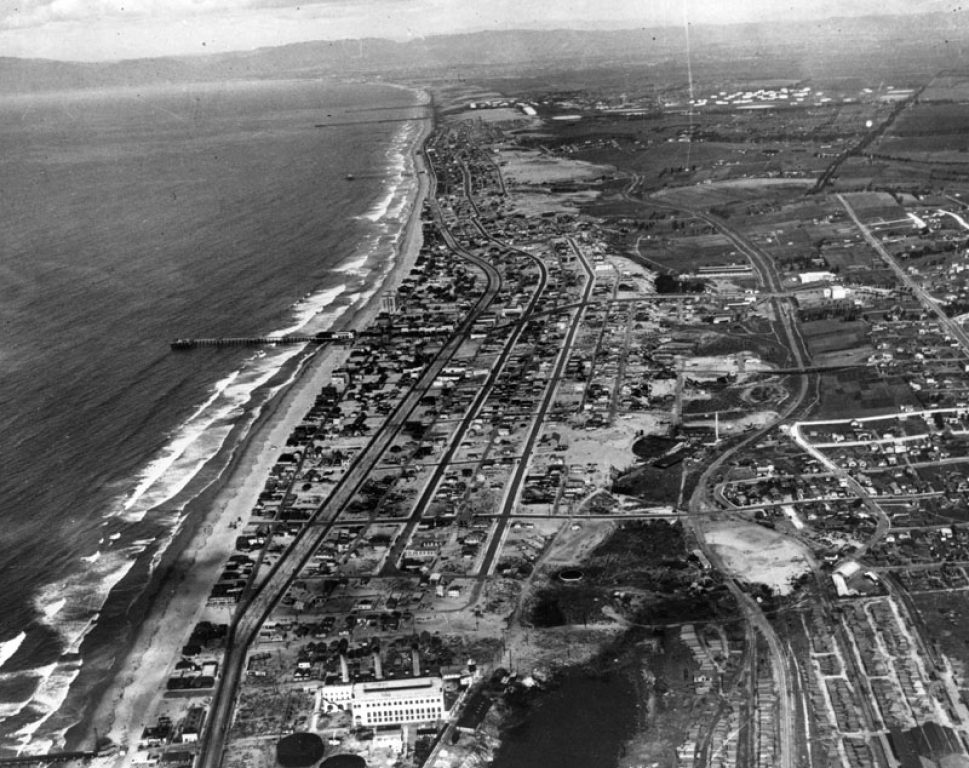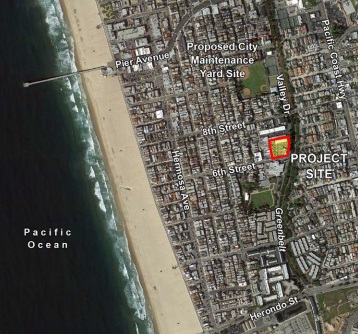A wildcat well struck oil in 1930 and pumped it for decades from the city dump of Hermosa Beach, California.
As the Great Depression began, California-Ventura Oil Company discovered the Hermosa Beach oilfield. The newly revealed field proved to be a key addition to the prolific Torrance oilfield, discovered a decade earlier.

The Torrence field, discovered in 1922, would produced more than 227 million barrels of oil from the Los Angeles Basin.
“The first major gusher in present-day Torrance came in on June 7, 1922 at Del Amo No. 1, located on what is now Kent Avenue,” according to an October 2014 post by the Daily Breeze.
A 1930 California-Ventura Oil Company oil discovery at Hermosa Beach would lead to decades of litigation and referendums.
California-Ventura Oil
The petroleum exploration company California-Ventura Oil incorporated in 1927 with capitalization of $500,000. By 1929, the venture had several working drilling rigs when lightning sparked the “Sulphur Mountain Fire,” which destroyed the derricks.
“The most disastrous fire in Ventura county’s history,” reported the local newspaper. Many other small independent companies also lost rigs, engines and production equipment in the 19,200-acre fire, which burned down more than 90 rigs.

Hermosa Beach, California, circa 1930. Photo courtesy Richard Finken, A History of Oil Production in Hermosa Beach.
Despite the destruction, California-Ventura Oil increased its capitalization to $650,000 and was back in business. The company began drilling its Hermosa Beach wildcat well in the summer of 1930.
“California-Ventura Oil Co.’s No. 1 Hermosa, a wildcat well within the city limits of Hermosa, has opened a new beach district to oil development,” the Boliver Breeze reported.
“On August 26, (the) well tested 225 barrels of 19 gravity oil at about 4,000 feet,” the newspaper noted. The discovery well was not only within the city limits, it was within the Hermosa Beach city dump, today known as the “City Maintenance Yard.”
The No. 1 Hermosa well extended the prolific Torrance oilfield’s boundaries into the community of Hermosa Beach.
When California-Ventura Oil’s second well also struck oil, it brought the petroleum industry’s attention to the popular getaway beachfront community. More petroleum companies began arriving.
Drilling Debates
By May of 1932, the Hermosa Beach community hosted five oil wells pumping a total of 205 barrels of oil per day – at about 67-cents per barrel.
But then as today, the quest for California energy was contentious. In 1932, Hermosa Beach voters approved a ban on future drilling within the city, spawning decades of intermittent litigation and referendums.
Despite the 85 years of controversy, the Hermosa Beach oilfield has yielded over one million barrels of oil since California-Ventura Oil’s first well. Stinnett No. 7, originally California-Ventura Oil Company well No. 2, was shut in January 1988.

Hermosa Beach residents continue to debate petroleum exploration and production. A newly proposed site is on the ballot for 2015.
By 2005, all Hermosa Beach wells had been plugged and abandoned. The original wildcat well passed through several companies and interests over the decades — Stinnet Oil Company, the City of Hermosa Beach, MacPherson Energy Company, and E&B Natural Resources.
By 2015, the abandoned well site offered new opportunities. The advancing technologies of directional drilling presented more environmentally friendly and efficient approaches to recovering oil reserves. Slant drilling had come a long way (see Technology and the “Conroe Crater”).
Hermosa Beach residents continue to debate petroleum exploration and production, including proposals to drill at the original California-Ventura Oil Company site in the old city dump.
The stories of exploration and production companies joining petroleum booms (and avoiding busts) can be found updated in Is my Old Oil Stock worth Anything?
_______________________
Recommended Reading: Black Gold in California: The Story of California Petroleum Industry (2016); Early California Oil: A Photographic History, 1865-1940 (1985);. Your Amazon purchase benefits the American Oil & Gas Historical Society. As an Amazon Associate, AOGHS earns a commission from qualifying purchases.
_______________________
The American Oil & Gas Historical Society (AOGHS) preserves U.S. petroleum history. Become an AOGHS annual supporting member and help maintain this energy education website and expand historical research. For more information, contact bawells@aoghs.org. © 2023 Bruce A. Wells.
Citation Information – Article Title: “California-Ventura Oil Company.” Authors: B.A. Wells and K.L. Wells. Website Name: American Oil & Gas Historical Society. URL: https://aoghs.org/old-oil-stocks/california-ventura-oil-company. Last Updated: June 29, 2023. Original Published Date: October 17, 2014.


